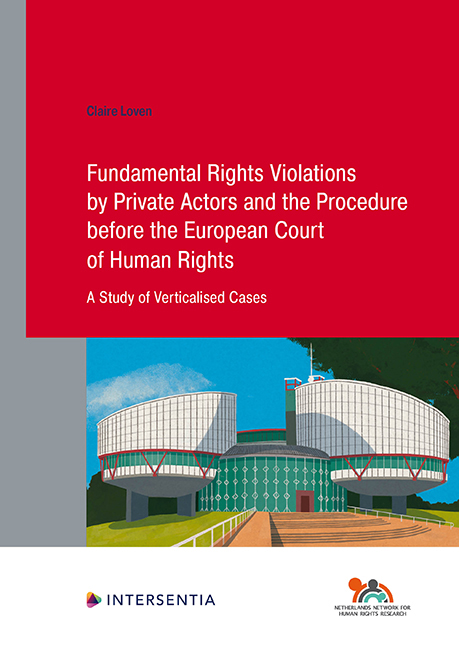 Fundamental Rights Violations by Private Actors and the Procedure before the European Court of Human Rights
Fundamental Rights Violations by Private Actors and the Procedure before the European Court of Human Rights Published online by Cambridge University Press: 29 February 2024
INTRODUCTION
As explained above, the proposal for a new approach to verticalised cases presented here is directed at the third-party intervention procedure. However, a proposal to redesign this procedure cannot be made without taking full account of the features of the current procedure. Hence, this chapter introduces the rules governing the procedure, the various forms of third-party intervention allowed under the Convention, and the current third-party intervention practice before the Court. An overview of the current procedural requirements is presented in Section 2, followed by a discussion of the various forms of third-party intervention allowed under the Convention (Section 3), and, finally, a discussion of how third-party interventions influence the Court's case law (Section 4).
PROCEDURAL REQUIREMENTS
Before Protocol No. 11 to the Convention entered into force in 1998, the Convention did not contain a provision on third-party intervention, even though the Court had allowed a third party to intervene as early as 1979. This was in the case of Winterwerp, which concerned the compulsory confinement of a psychiatric patient. In this case against the Netherlands, the Court granted the United Kingdom leave to intervene on the basis of the Court's competence to ‘hear as a witness or expert in any other capacity any person whose evidence or statements seem likely to assist in the carrying out of its task’. In 1983, the Court provided a separate legal basis for third-party interventions in its Rules of Court. This was followed by the entering into force of Protocol No. 11 in 1998, which ensured that the third-party intervention procedure was codified in the Convention. The procedure is now laid down in Article 36 ECHR, which reads as follows:
1. In all cases before a Chamber or the Grand Chamber, a High Contracting Party one of whose nationals is an applicant shall have the right to submit written comments and to take part in hearings.
2. The President of the Court may, in the interest of the proper administration of justice, invite any High Contracting Party which is not a party to the proceedings or any person concerned who is not the applicant to submit written comments or take part in hearings.
3. In all cases before a Chamber or the Grand Chamber, the Council of Europe Commissioner for Human Rights may submit written comments and take part in hearings.
To save this book to your Kindle, first ensure no-reply@cambridge.org is added to your Approved Personal Document E-mail List under your Personal Document Settings on the Manage Your Content and Devices page of your Amazon account. Then enter the ‘name’ part of your Kindle email address below. Find out more about saving to your Kindle.
Note you can select to save to either the @free.kindle.com or @kindle.com variations. ‘@free.kindle.com’ emails are free but can only be saved to your device when it is connected to wi-fi. ‘@kindle.com’ emails can be delivered even when you are not connected to wi-fi, but note that service fees apply.
Find out more about the Kindle Personal Document Service.
To save content items to your account, please confirm that you agree to abide by our usage policies. If this is the first time you use this feature, you will be asked to authorise Cambridge Core to connect with your account. Find out more about saving content to Dropbox.
To save content items to your account, please confirm that you agree to abide by our usage policies. If this is the first time you use this feature, you will be asked to authorise Cambridge Core to connect with your account. Find out more about saving content to Google Drive.